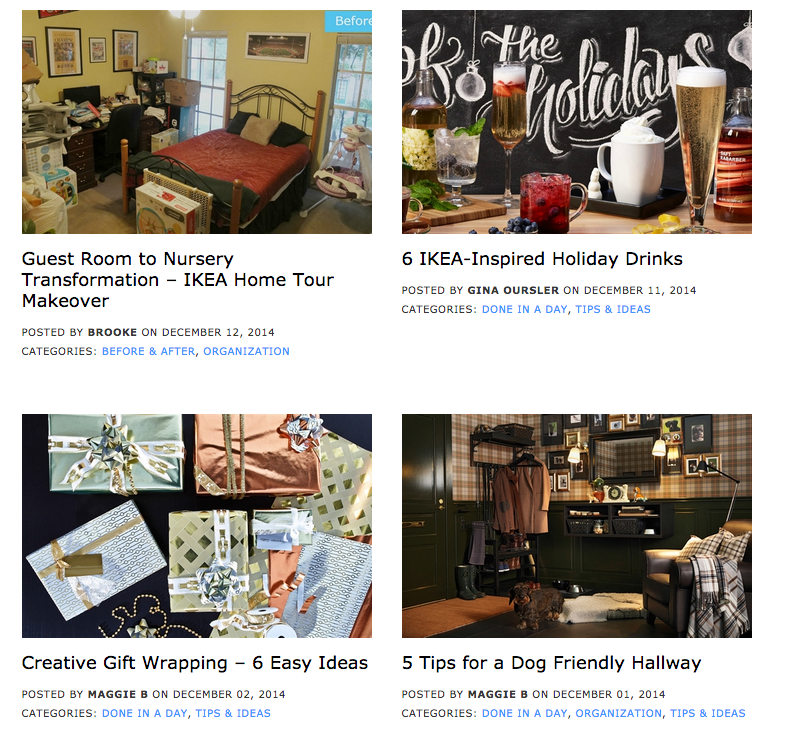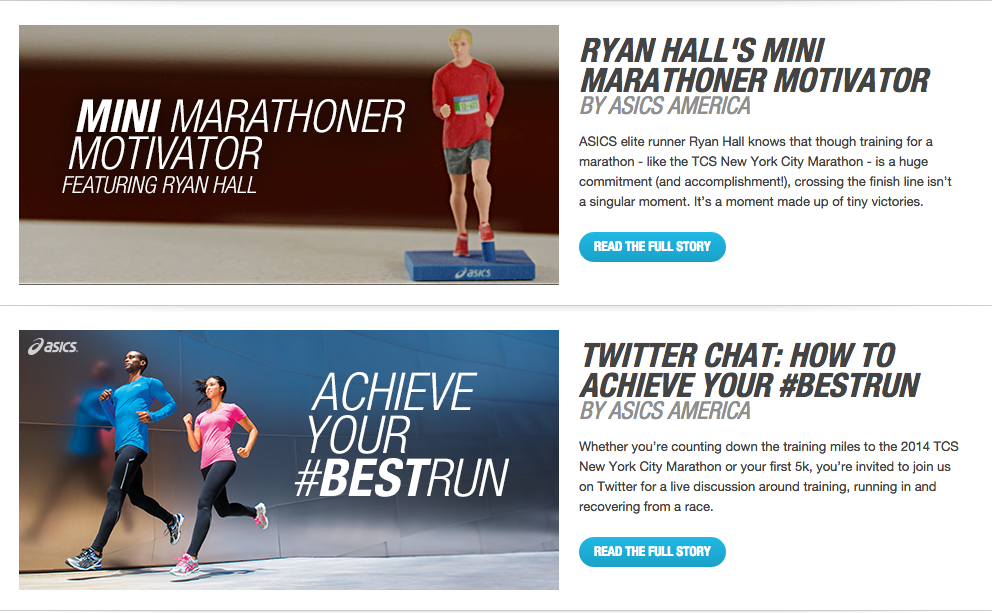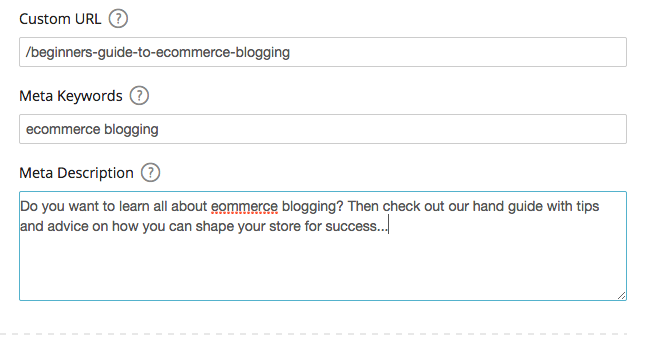Do you
have a blog for your online
store? If
you don't then you could be missing out on a
ton of benefits.
As an
integral part of content marketing, blogging can make you better at
SEO because you're continuously adding fresh new content to your site
– and that's something that Google loves to see.
Not only
that, but even your customers want to see more content from you. Yep
that's right, 61%
of consumers say that they feel better about a company that delivers
custom content and are more likely to buy from that company.
But if
you're new to blogging and don't know where to start then check out
our guide and get started today...
1. Get
to know your audience
Before
you jump head first into blogging, you need to think about who you
are blogging to. What does your audience want to read? You should aim
to make your blog as targeted as you can, so if you
want to see more sales then your product needs to be at the core of
your posts.
Our best
advice here is to set up a buyer
persona
so you can really get to know who you are talking to in your posts. A
buyer persona is basically an example of what your ideal customer is
– based on market research.
You
should aim to detail everything you can about your customers
including demographics, personality traits, and what influences their
buying decisions.
If you
need help with this then check out HubSpot as they offer a free
template
for you to create a buyer persona!
2. Get
creative with topic ideas
So we
briefly mentioned that your products should be at the core of your
blog topics, but we don't mean that your blogs should be
sales-orientated. In fact, they should be the very opposite.
The
topics of your blogs need to provide value to your readers. They need
to encourage people to not only click on and read it, but to keep
coming back for more. People won't come back if you're constantly
selling to them, so it's important that your blogs are fun,
interesting and they resonate with your audience.
Did you
know that 80%
of people will read your headline, but only 20% will carry on reading
the rest of the post? It really is crucial to the success of your
posts that you get your headline right.
The most
encouraging headlines tend to be: 'how to' posts, x number of tips,
or a headline that asks a question. Check out the Ikea
blog for
inspiration. They have plenty of posts that offer tips and advice on
how their readers can decorate their homes.

3. Become
the expert
You know
those blogs that you always go to because you learn so much from
them? Well that's what you should aim to do with yours. You may not
even think as yourself as an expert yet, but the people buying your
products will have a genuine interest in what you have to say.
You can
use your blog as the platform to show people that you are in the
expert in your niche. Take a look at this example from sportswear
expert Asics.
Their blog offers plenty of handy tips and advice on running, how to
stay motivated, training, athletic event coverage and more.
It's not
just focused on the products that they sell. The reason people read
their blogs is because they are offering expert advice and people
trust what they have to say.

4. Use
plenty of visuals
Would
you rather read a long stream of text, or a post that breaks things
up with visual examples? There's no denying that images are nice to
on the eye, but they can actually improve how many people view your
content...
Did you
know that your content can generate up to 94%
more views if you add images?
You can
use images, videos and screenshots to show your reader how to do
something. It could be that you want to teach them how to use your
product. Check out this example from one of our very own customers,
Rvinyl
Performance...
They
sell car accessories and their latest post shows the reader how to
install projector headlights to a Ford Edge. They've combined text,
images and a video to show a step-by-step process of how it's done.
This is
perfectly targeted to their audience, offers excellent advice and
pushes the viewer to buy their car accessories.

5.
Setting up your posts for success
When it
comes to setting up your posts you'll be able to very easily do so
from your content management system. If you are using the AmeriCommerce online store platform
then we've got simple tools to help you set up and schedule a post.
You can very easily change the header size, font, add images and
anything else needed to make the post look as you want it to.
It's
also important to remember your meta data here because this can help
get your post fully optimized for a search engine. You'll be asked to
enter keywords, which you can take from your post, and a meta
description of what your post is about.
This
will people understand what they can expect when they click on your
post, and it's also handy to add your keyword here too - again for
the benefit of search engines.
So for
example, our meta data for this post may look something like this:

Top Tip:
the SEO experts at Moz recommend that your meta description should be
between 150-160 characters so that it fits within a search engine
listing.
6.
Arrange a social schedule
There's
no point in creating blog posts if you aren’t going to promote them
on your social channels. Your blogs offer prime content that can be
used to target and encourage more social followers.
The good
news is that there are many social media management tools out there
that can help you stay organized and set up schedules. A good
management tool will also give you the metrics you need to be able to
see how well your content is performing, and how engaged your fans
are.
You can
check out some
of the top platforms here.
When it
comes to posting your blogs, you should think carefully about what
you want to say, in order to get it in front of your audience. So for
example on Twitter, you should make use of the hashtags that your
audience will be searching for in order to gain more exposure.
And
that's what we've done here with our latest ecommerce blog post about
Pinterest...

Good
luck!
Hopefully
by reading this guide you've got everything you need to get started
with your Ecommerce
blog.
Remember, your blog is all about engaging with your audience,
providing expert advice and encouraging people to keep coming back
for more.
Let us
know how you get on in the comments below.
And if
you need any more help with your online store then contact
us today!